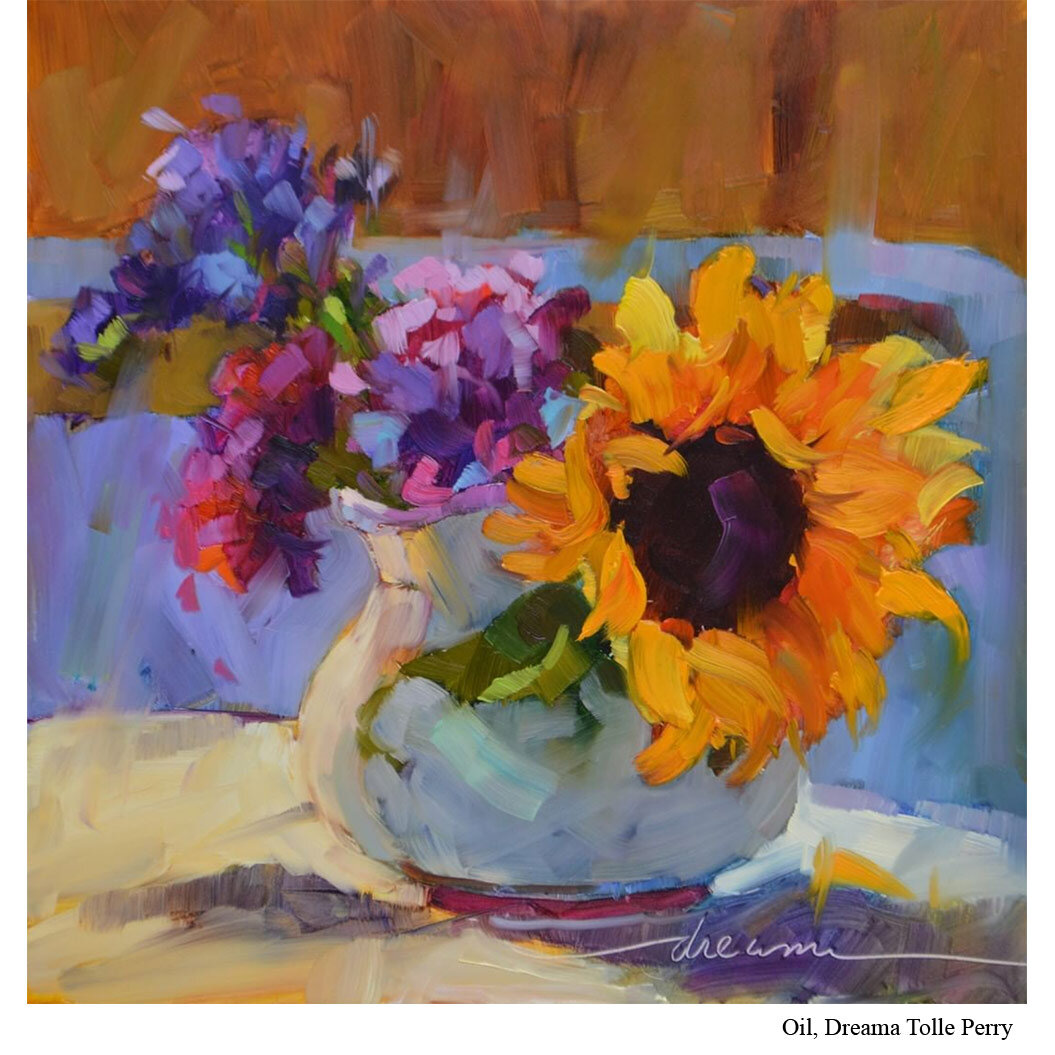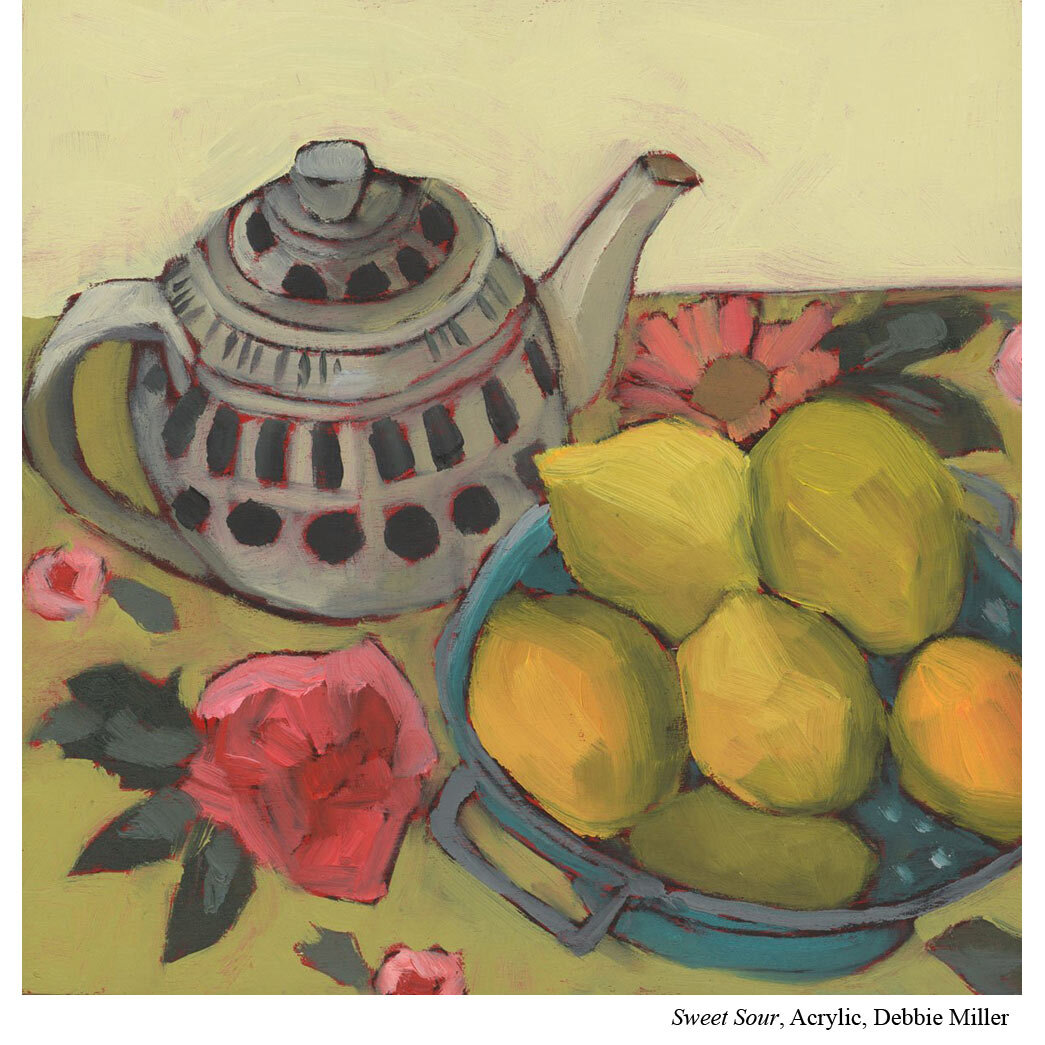To Finish or Not to Finish: How 7 Artists Approach Learning to Paint
There are many ways to build your skills as an artist. When designing your self study, it can be helpful to see how others approached learning to paint. It’s a topic we love to cover in the podcast.
All artists build their skills differently but they fall into 3 general categories. Let's take a look.
FINISH WHOLE PAINTINGS SLOWLY
Several artists designed their learning around working through whole, finished paintings. This included sketches and studies before they began the larger or more complex painting itself.
Several of these artists still work this way today.
Chris Krupinski, Carrie Waller and Carol Carter, all watercolorists, worked through single complex paintings while learning to paint. Carter’s process involves creating smaller painting studies to both figure out approach and color before jumping into the big final painting.
Why this works:
There is much to learn at every portion of the painting process. It can be easy to quit halfway through when the painting gets into its ugly stage. But there are things you won’t learn if you’re never finishing anything. Finishing is important when learning to paint.
Also if the work you want to do is bigger or more complex, you may need more time than you have in just one sitting. Painting is tiring work. If you feel yourself getting tired, take a break and then come back to it when you have more energy. Sometimes that will take more than a single day. And that’s absolutely ok. No one is keeping track of your time but you.
DAILY PAINTING
Another term for daily painting is alla prima painting. Alla prima means loosely all at once. You generally finish an entire painting in one setting. Many of our guests have used this approach for both their learning and their careers. Lisa Daria Kennedy, Debbie Miller and Dreama Tolle Perry all fall into this category.
Why this works:
One of the benefits of daily painting is that no one painting becomes precious. You can try ideas in one painting and then take what you learned in the very next painting.
You can also see progress in a very clear way. You can ask yourself, “Did I paint today?” and the answer is yes. If the answer is no, you’ve got to get to work.
Daily painting encourages you to hold space and time for the painting. It encourages you to come up with systems so that you can finish an entire painting in a day. It asks you to confront the very real limitations on time and priorities and then deal with them so that you can finish that daily painting.
EXPERIMENTS AND EXERCISES
A third group of artists understand that sometimes you just need a small fire lit under you and that working on a full painting (even a small one) can be overwhelming. These fall into the studies and challenges camp.
Jane Davies is a great example of this. Davies sets up challenges for herself (and encourages her students to do the same) that get them working and working fast. The speed is an important component because speed allows you to just react to the painting. Pure reaction allows you later to look back and see what you’ve done. To notice your tendencies. And also to not get down on yourself.
Why this works:
Experiments and exercises are low on the intimidation scale. Because they have a lower perceived barrier to entry (you’re not saying yes to completing a whole painting), they are easier to begin.
They also allow you to focus on one thing and get better, which can be a real confidence boost. Painting has a lot happening, and experiments and exercises allow you to focus down on something more specific in a way that is fun.
Exercises and experiments are also a great option for when you’re truly beginning or when you’re stuck or just need an artistic change of scenery.
ANYTHING TO GET YOU PAINTING
All podcast guests agree on one thing: The more you paint, the better you will be. There is no wrong way to learn to paint except one that makes you feel miserable.
So if you find yourself avoiding the studio, look at how you’re approaching painting time. Maybe it’s time to switch up your approach and find one that is better for you right now, wherever you are in your painting journey.
Remember: There are as many ways to learn how to paint as there are ways to paint. It may take a few tries to find an approach that makes learning fun and rewarding…but it will be worth it in the end.
Get ideas to help you get better at painting sent straight to your inbox. Sign up below.





